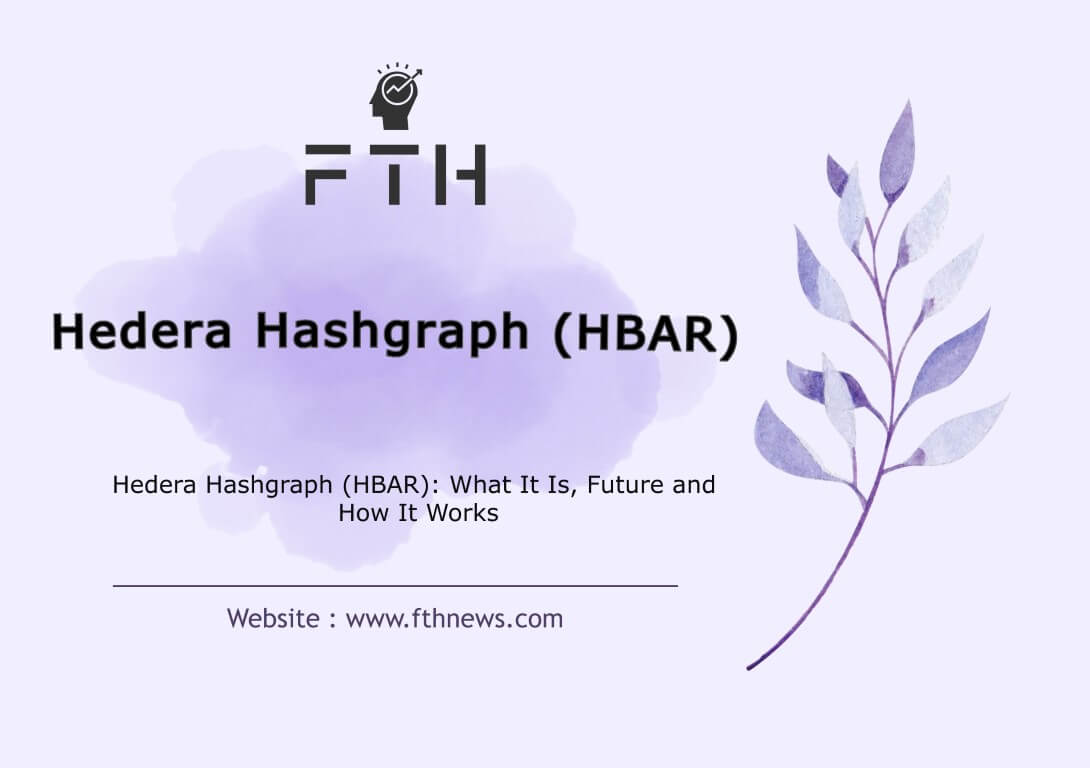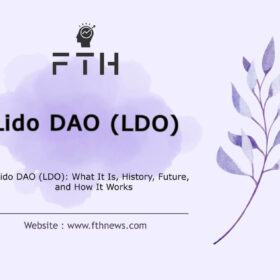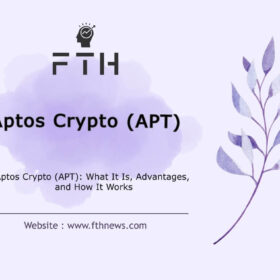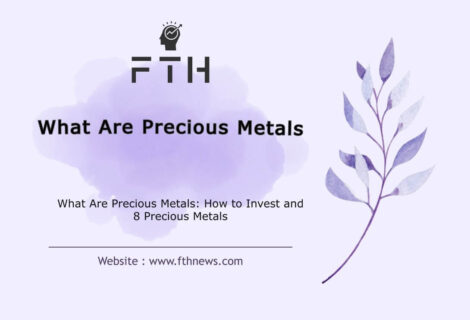
Hedera Hashgraph (HBAR): What It Is, Advantages, Future and How It Works
The unique features of blockchain, such as transparency and decentralization, have propelled this technology into various fields, offering distinctive advantages to users. However, blockchain technology grapples with its own set of challenges, with slow and expensive transactions standing out as significant drawbacks for many top blockchain networks. Addressing these issues is where Hedera Hashgraph technology steps in.
Hedera Hashgraph, positioned as a distributed ledger technology (DLT), differentiates itself by not relying on blockchain architecture. Notably, it operates without the need for miners or shareholders, presenting itself as a more secure, efficient, and faster alternative to traditional blockchain networks. Going a step further, Hedera claims to outperform even the most renowned payment networks globally, including Visa and MasterCard.
In this article, we will explore the primary distinctions between Hedera Hashgraph and Blockchain, shedding light on how Hedera elevates distributed ledger technology to new heights. Additionally, we’ll delve into the intricacies of how hashgraph operates, comparing its approach to blockchain, and provide detailed insights into the native token of this digital currency, along with information on wallets and the process of purchasing this digital currency. Join us on this journey as we unravel the intricacies of Hedera Hashgraph.
What is Hedera Hashgraph (HBAR)?
Hedera Hashgraph emerges as a decentralized network with a unique consensus algorithm, positioning itself as a formidable candidate to replace traditional blockchain systems. This platform boasts the capability to cater to the demands of decentralized applications with exceptionally high transaction volumes. Utilizing concepts such as Virtual Voting and the Gossip protocol, Hedera ensures secure and rapid transaction processing.
Considered the new generation of distributed ledger technologies, Hedera Hashgraph entered the scene with a mission to rectify the shortcomings of blockchain, swiftly gaining popularity and recognition. Operating on a peer-to-peer basis, this platform eliminates the need for transaction confirmation and can process thousands of transactions per second.
One of the standout features of Hashgraph is its ability to host decentralized applications with extensive transaction volumes. To comprehend its claim, it’s worth noting that the transaction limit for the Visa payment network is 24,000 transactions per second, while Hedera surpasses this with a staggering 500,000 transactions per second. This is a significant leap compared to the processing speeds of major blockchains like Bitcoin and Ethereum, which manage around 7 and 30 transactions per second, respectively.
In contrast to traditional blockchains that utilize blocks and miners, hashgraph employs a Directed Acyclic Graph (DAG) for transaction processing. At the core of this graph is the Gossip protocol, facilitating the secure dissemination of information among network nodes. In the subsequent sections, we will delve deeper into this protocol and its functionalities.
Hedera Hashgraph employs a selective approach, allowing only verified nodes to play a role in determining transaction history. This strategic limitation of nodes involved in critical functions such as order placement and timestamp determination expedites transaction finalization and enhances resistance to manipulation. The Hedera development team asserts that this method ensures the accurate and prompt processing of data for businesses and decentralized applications with substantial transaction volumes, earning the trust and collaboration of major companies such as LG, IBM, and Boeing.
History and Founders of Hedera Hashgraph (HBAR)
Hedera Hashgraph owes its inception to the collaborative efforts of two visionary founders, Dr. Leemon Baird and Mance Harmon.
Dr. Leemon Baird:
A stalwart in the field of computer science, Dr. Leemon Baird is recognized as the driving force behind the development of the Hashgraph distributed consensus algorithm. With a career spanning more than a decade, Baird’s expertise encompasses various facets of computer science and network security. Prior to his pivotal role as the Chief Scientist at Hedera, he served as a senior research scientist at the Academy’s Center for Cyberspace Research. Notably, Dr. Baird is renowned as the primary architect of the Hashgraph Algorithm and a key figure in the establishment of Swirlds.
Mance Harmon:
A prominent member of Hedera’s board of directors, Mance Harmon brings over 20 years of expertise in entrepreneurship and executive management within the IT security industry. Harmon’s distinguished career has seen him lead and contribute to various companies in the cybersecurity landscape. His pivotal role in shaping Hedera’s strategic direction is reflective of his extensive experience and entrepreneurial acumen.
In 2015, Dr. Leemon Baird and Mance Harmon co-founded Swirlds, an institution that would go on to invent the revolutionary Hashgraph Algorithm. The novel technology garnered recognition and was officially copyrighted in Swirlds’ name. Subsequently, in 2019, Swirlds spearheaded the launch of the Hedera project, marking a significant milestone in the evolution of distributed ledger technologies.
The leadership team at Hedera extends beyond the founders, comprising 12 researchers, each bringing a wealth of experience and accomplishments from diverse professional backgrounds. The team’s collective expertise has played a pivotal role in the development and advancement of Hashgraph technology.
Hashgraph’s innovative approach quickly drew attention. In 2018, Hedera Hashgraph successfully raised $124 million through the sale of its native currency. In its nascent stages, Hedera’s code underwent scrutiny from a select few companies. However, as the platform gained traction, more developers have joined in publicly testing the network, underlining the growing interest and confidence in the capabilities of Hedera Hashgraph.
The Differences Between Blockchain and Hedera Hashgraph
Blockchain and Hashgraph stand as prominent pillars in the realm of distributed ledger technology, each distinguished by unique characteristics. In this section, we delve into four key differences between these two technologies.
1. Decentralization and Governance:
- Blockchain: An open-source distributed ledger, blockchain enables broad participation in the creation of digital currencies and utility tokens. Over time, it has gained trust and acceptance, leveraging its decentralized nature.
- Hashgraph: In contrast, Hashgraph operates on an algorithm copyrighted exclusively by Swirlds. Decisions regarding changes or new inputs are the prerogative of this company’s decision-makers.
2. Transaction Speed and Scalability:
- Blockchain: Various protocols attempt to enhance blockchain scalability, with innovations like Hyperledger, Ethereum, Polkadot, and Corda. However, their transaction speeds typically range from 100 to 10,000 transactions per second.
- Hashgraph: Leveraging the GOSSIP protocol, Hedera Hashgraph boasts impressive transaction speed estimates of 500,000 transactions per second. While the scalability of Hashgraph awaits practical validation, it currently outpaces existing blockchain solutions.
3. Data Storage and Efficiency:
- Blockchain: Data in blockchain is stored in blocks, posing challenges for miners. When two blocks are mined simultaneously, miners must choose one, resulting in wasted efforts.
- Hashgraph: By not adhering to the block structure, Hashgraph demonstrates efficiency. The GOSSIP protocol ensures data publication without wasting or removing resources, making it a streamlined approach.
4. Consensus Mechanism:
- Blockchain: Blockchain relies on various consensus algorithms such as proof of stake or proof of work. These algorithms demand significant computing power and electricity consumption.
- Hashgraph: Hedera Hashgraph employs a virtual voting mechanism, deviating from traditional algorithms. This low-cost, high-efficiency solution eliminates the need for extensive computing power. The Gossip protocol-based virtual voting ensures equal participation of all nodes in the network during the final validation of transactions, creating a fair and energy-efficient consensus process.
In essence, while blockchain and Hashgraph share the overarching goal of providing distributed ledger solutions, their methodologies diverge significantly. The centralized governance of Hashgraph, coupled with its unparalleled transaction speed and innovative consensus mechanism, positions it as a formidable contender in the ever-evolving landscape of distributed ledger technologies.
Advantages of Hashgraph Technology Over Blockchain:
Hedera Hashgraph technology presents several significant advantages when compared to traditional blockchain systems:
1. Environmentally Friendly:
- Hashgraph: With no need for energy-intensive mining processes, Hashgraph significantly reduces its environmental impact. Unlike blockchain, which relies on resource-intensive proof-of-work mechanisms, Hashgraph’s consensus algorithm operates without the need for extraction, making it an environmentally sustainable alternative.
2. Lower Transaction Costs:
- Hashgraph: The absence of mining activities contributes to lower transaction costs. Traditional blockchain systems often involve competitive mining, consuming substantial energy and resources. Hashgraph’s streamlined approach to consensus and transaction validation potentially results in more cost-effective transactions.
3. Open Ledger with Enhanced Security and Anonymity:
- Hashgraph: Hashgraph not only provides the security and anonymity characteristic of blockchain-based ledgers but also introduces additional benefits such as improved performance and increased capacity. The Directed Acyclic Graph (DAG) structure allows for an open ledger system, where transactions are efficiently recorded without the need for resource-intensive processes.
4. Improved Performance and Higher Capacity:
- Hashgraph: The use of the Gossip protocol and the DAG structure enhances the performance and capacity of Hashgraph. Transactions are processed more efficiently, and the scalability of the network is notably higher compared to many blockchain platforms. This efficiency allows Hashgraph to handle a significantly larger number of transactions per second.
5. Customization and Token Creation:
- Hashgraph: While Hedera Hashgraph is currently the only open ledger based on Hashgraph technology, it provides developers with detailed instructions and source code samples through an API. This enables developers to create and run their own tokens on the Hedera Hashgraph network. This level of customization offers flexibility and encourages innovation within the network.
In conclusion, Hedera Hashgraph technology brings forth a range of advantages, from environmental sustainability and lower transaction costs to improved performance and the ability to create custom tokens. As the technology continues to evolve, these features position Hashgraph as a promising alternative to traditional blockchain systems, demonstrating its potential to address some of the key challenges faced by existing distributed ledger technologies.
Understanding HBAR Token on the Hedera Network
HBAR Token Overview:
The HBAR digital currency stands as the native token of the Hedera network, serving various essential functions within the platform. Key characteristics of the HBAR token include:
1. Fixed Supply:
- HBAR has a fixed supply of 50 billion tokens. This fixed supply is designed to manage scarcity and create a sense of digital scarcity, much like other cryptocurrencies.
2. Utility in Network Operations:
- Transaction Fees: HBAR is utilized as network fuel, serving to pay transaction fees within the Hedera network. Users engaging in transactions or utilizing decentralized applications (dApps) on the platform make payments using HBAR.
- In-App Payments and Micropayments: HBAR facilitates seamless in-app payments and micropayments, providing a versatile solution for various transaction types.
3. Network Security and Proof-of-Stake (PoS):
- Hedera Hashgraph employs a proof-of-stake (PoS) algorithm for its consensus mechanism. HBAR plays a crucial role in protecting and enhancing the security of the network. Nodes are rewarded in HBAR for their honest participation in securing the network.
4. Peer-to-Peer Payments:
- HBAR serves as a means for peer-to-peer payments within decentralized applications on the Hedera network. Its use extends beyond simple transactions, contributing to the functionality and economic ecosystem of the platform.
5. Token Distribution:
- The issuance of HBAR tokens on the Hedera network deviates from traditional cryptocurrency mining. Instead of involving complex cryptographic consensus, all 50 billion HBAR tokens were mined and distributed before the mainnet launch in 2018. This distribution strategy sets the stage for the token’s role in the Hedera ecosystem.
- Hedera pre-mined treasury: 32.4%
- Ecosystem development: 24%
- Purchase contract: 17.4%
- Founders and original board of directors: 13.8%
- Swirlds platform: 8%
- Employees and service providers: 4.4%
Use Cases of HBAR Cryptocurrency:
- Payment of Network Service Fees: Users leverage HBAR tokens to cover fees associated with utilizing various services on the Hedera network.
- Making Payments and Micropayments: HBAR facilitates smooth and efficient payments, including micropayments, enabling transactions of varying sizes on the platform.
- Rewarding Nodes for Securing the Network: Nodes actively involved in securing the Hedera network receive HBAR as rewards for their contribution to maintaining the integrity and security of the decentralized system.
In essence, HBAR plays a pivotal role in the economic infrastructure of the Hedera network, acting as a means of exchange, a reward mechanism, and a fuel for network operations. Its fixed supply and diverse use cases contribute to the overall functionality and sustainability of the Hedera Hashgraph ecosystem.
How Hedera Hashgraph (HBAR) Works:
The Hedera platform operates through three core frameworks, collectively known as Hedera Network Services, each contributing distinct functionalities:
1. Hedera Token Service (HTS):
- Functionality: HTS enables the configuration, management, and transfer of both native fungible tokens and non-fungible tokens (NFTs) within the Hedera network.
- Use Cases: Developers can leverage HTS for creating and handling various types of tokens, fostering a versatile ecosystem within the platform.
2. Hedera Consensus Service (HCS):
- Functionality: HCS allows the recording of transactions and other critical reports, such as governance decisions and supply chain asset tracking, on the Hedera network.
- Use Cases: This service ensures a transparent and secure record of transactions and relevant reports, contributing to the integrity of the decentralized network.
3. Hedera Smart Contract Service:
- Functionality: Developers can deploy smart contracts using various programming languages, including Solidity, through the Hedera Smart Contract Service. This enables the creation of decentralized applications (dApps) on the Hedera platform.
- Use Cases: Smart contracts provide a programmable layer, allowing for the development of diverse decentralized applications with a wide range of functionalities.
Consensus Algorithm: Hashgraph Gossip Protocol
The Hashgraph Gossip Protocol serves as the consensus algorithm underpinning the three main components of the Hedera Network Services. Key aspects of the Hashgraph Gossip Protocol include:
- Functionality: This consensus algorithm facilitates communication and agreement among nodes in the network, ensuring a shared and accurate understanding of transactions and events.
- Decentralized Consensus: Nodes in the network engage in continuous “gossip” exchanges, spreading information about transactions and network updates. This decentralized consensus process eliminates the need for energy-intensive mining and ensures the reliability of the distributed ledger.
In summary, Hedera Hashgraph’s operation is driven by its three main frameworks — Hedera Token Service, Hedera Consensus Service, and Hedera Smart Contract Service — each serving distinct purposes. These services collectively contribute to the platform’s versatility and functionality. The Hashgraph Gossip Protocol, acting as the consensus algorithm, ensures decentralized agreement and communication among nodes, fostering a secure and transparent environment within the Hedera network.
Advantages of Hedera Hashgraph:
- Unparalleled Security:
- Pros: Hedera Hashgraph achieves a high level of security through its aBFT (Asynchronous Byzantine Fault Tolerance) algorithm. This innovative approach ensures the network’s resilience against malicious actors.
- Abundant Speed:
- Pros: Hedera Hashgraph surpasses Bitcoin and Ethereum in speed. Transactions are processed in parallel, reducing waiting times significantly. The network’s design allows for almost instantaneous transaction sending and finalization, comparable to the speed of the Internet.
- Low and Fixed Fees:
- Pros: Transaction fees on Hedera are consistently low, staying below 1 cent despite transactions finalizing within seconds. This is in stark contrast to other networks like Bitcoin, where fees can be higher, and Ethereum, where fee instability can hinder frequent and immediate transactions.
- Compatibility with Solidity:
- Pros: Hedera Hashgraph employs Solidity, the same programming language used in Ethereum for smart contracts. This compatibility facilitates an easy transition for developers familiar with Ethereum’s ecosystem, enabling the creation of decentralized applications on the Hedera platform.
Disadvantages of Hedera Hashgraph:
- Non-Open Source Code:
- Cons: Unlike many other digital currencies, Hedera Hashgraph’s code is not open source. The copyright is held by Swirlds’ founders, limiting the platform’s transparency and the ability for users to independently address issues. The lack of open source may hinder community-driven innovation and problem-solving.
- Governance Issue:
- Cons: The Hedera Governing Council raises concerns about decentralization. The limited number of council members, currently filled by large organizations like IBM, Google, and Boeing, and the permanent seat for Swirlds, challenges the ideal of decentralized decision-making. While there are plans for future updates to introduce more community-based nodes, the current governance structure has faced criticism for its centralized nature.
In summary, Hedera Hashgraph demonstrates notable strengths in security, speed, and low transaction fees. However, challenges exist, particularly in terms of non-open source code and governance concerns. The platform’s commitment to future updates for enhanced decentralization reflects an ongoing effort to address these issues and align more closely with the principles of decentralized technologies.
Hedera Hashgraph Wallets:
Given the unique nature of Hashgraph networks, traditional wallets may not be suitable for storing and managing HBAR tokens. The Hedera website recommends the following HBAR-compatible wallets:
- BitGo
- Fireblocks
- Kingdom Trust
- Atomic Wallet
- BRD
- Coinomi
- Exodus
- Guarda
- Wallwallet
- Hex
- Ivy Wallet
- MyHbarWallet
It’s essential to note that various exchanges also offer storage solutions for HBAR. When selecting an exchange, prioritize reputable platforms with a strong security track record. Security measures are critical to safeguarding your assets.
Safety Reminder: Regardless of the wallet or exchange chosen, ensure the safety of your assets. Implement strong authentication measures, keep private keys secure, and stay informed about the latest security practices.
The Future of Hedera Hashgraph (HBAR):
Hedera Hashgraph is a dynamic public network addressing the limitations of traditional blockchains and distributed ledgers. As of now, numerous companies and protocols leverage Hedera, processing over 1.4 million transactions per day on the mainnet, surpassing Ethereum.
Key Highlights:
- Diverse Applications: Hedera hosts applications in various industries, including supply chain management, healthcare, and payments.
- Ongoing Development: The Hedera project is continually evolving, with new projects, partnerships, and collaborations regularly announced.
- Token Distribution: HBAR tokens follow a specific distribution schedule:
- Total Supply: The total supply of HBAR tokens will be fully distributed over 15 years, reaching a circulating supply of 50 billion units.
In summary, Hedera Hashgraph demonstrates strong momentum with a robust ecosystem, ongoing development, and a strategic token distribution plan. Its ability to attract diverse applications and partnerships positions it as a key player in the evolving landscape of decentralized technologies.
FAQ
Hedera is used for various purposes, including decentralized applications, smart contracts, and facilitating fast, secure transactions on its network.
HBAR is special due to its Hashgraph technology, offering unparalleled security, speed, and low transaction fees compared to traditional blockchain systems.
HBAR and Bitcoin serve different purposes; HBAR excels in speed and efficiency, while Bitcoin is a store of value with widespread adoption.














